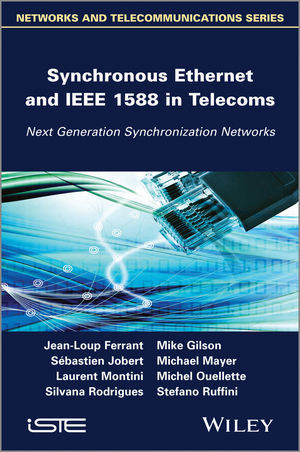

Most ebook files are in PDF format, so you can easily read them using various software such as Foxit Reader or directly on the Google Chrome browser.
Some ebook files are released by publishers in other formats such as .awz, .mobi, .epub, .fb2, etc. You may need to install specific software to read these formats on mobile/PC, such as Calibre.
Please read the tutorial at this link: https://ebookbell.com/faq
We offer FREE conversion to the popular formats you request; however, this may take some time. Therefore, right after payment, please email us, and we will try to provide the service as quickly as possible.
For some exceptional file formats or broken links (if any), please refrain from opening any disputes. Instead, email us first, and we will try to assist within a maximum of 6 hours.
EbookBell Team

4.7
36 reviewsThis book addresses the multiple technical aspects of the distribution of synchronization in new generation telecommunication networks, focusing in particular on synchronous Ethernet and IEEE1588 technologies.
Many packet network engineers struggle with understanding the challenges that precise synchronization distribution can impose on networks. The usual “why”, “when” and particularly “how” can cause problems for many engineers. In parallel to this, some other markets have identical synchronization requirements, but with their own design requirements, generating further questions. This book attempts to respond to the different questions by providing background technical information.
Invaluable information on state-of-the-art packet network synchronization and timing architectures is provided, as well as an unbiased view on the synchronization technologies that have been internationally standardized over recent years, with the aim of providing the average reader (who is not skilled in the art) with a better understanding of this topic.
The book focuses specifically on synchronous Ethernet and IEEE 1588 PTP-based technologies, both key developments in the world of synchronization over the last 10 years.
The authors address the needs of engineers and technical managers who are struggling with the subject of synchronization and provide an engineering reference for those that need to consider synchronization in NGN. The market applications that are driving the development of packet network synchronization and timing architectures are also discussed.
This book provides a wide audience with everything they need to know when researching, implementing, buying and deploying packet synchronization architectures in telecommunication networks.
Contents
1. Network Evolutions, Applications and Their Synchronization Requirements.
2. Synchronization Technologies.
3. Synchronization Network Architectures in Packet Networks.
4. Synchronization Design and Deployments.
5. Management and Monitoring of Synchronization Networks.
6. Security Aspects Impacting Synchronization.
7. Test and Measurement Aspects of Packet Synchronization Networks.
Appendix 1.Standards in Telecom Packet Networks Using Synchronous Ethernet and/or IEEE 1588.
Appendix 2. Jitter Estimation by Statistical Study (JESS) Metric Definition.